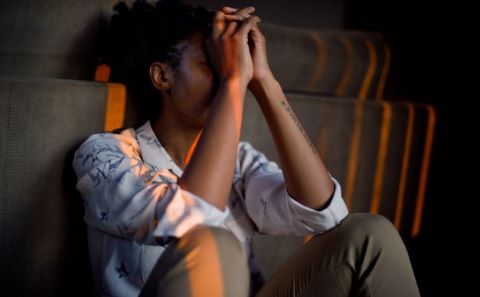New online stress test could help investigate social anxiety disorder remotely

Researchers at the University of Southampton have developed an online stress test that could help them investigate treatments for social anxiety disorder (SAD).
SAD is a debilitating disorder marked by a pronounced fear of social interaction. Treatments for social anxiety disorder are lacking and its remission rate is the lowest of all anxiety disorders.
Led by Nathan Huneke and published in the journal Psychiatry Research, the test called the Internet-Based Stress Test for Social Anxiety Disorder (ITSSAD), asks participants to complete a public speaking task as a stress and anxiety induction. But instead of public speaking, participants are tasked with getting to know another person.
The study proposed that this latter type of task targets a specific feature of SAD, rather than stress that may not be specific to SAD.
Dr Huneke, MRC Clinical Research Training Fellow, said: “SAD is one of the most common mental disorders and can be highly disabling, however, not everyone responds to first line treatments. It can be hard to access psychotherapy, and medications can cause unwanted side-effects. One way we test whether it is worth taking a treatment to a clinical trial is by using an experimental model, where we experimentally re-create the symptoms of a disorder. We wanted to find out whether we could create an experimental model for SAD using video conferencing software.”
Twenty participants with moderate to severe social anxiety symptoms took part in the study. After completing a host of personality questionnaires, participants attended a private, online testing session.
During the session, participants were told that they would soon be taking part in a social interaction task where they would be expected to get to know another person using video conferencing software. This instruction was followed by a five-minute anticipation period before participants entered a video conference and spoke with an experimenter for five minutes. Participants were told that their performance was being recorded by a ‘panel of experts’ who had their cameras off but were evaluating the performance. However, this ‘panel’ was controlled by the person leading the experiment.
As expected, participants’ anxiety increased during the anticipation period and remained high after the social task. Negative mood also increased during the anticipation phase, while positive mood decreased during the anticipation and remained low after the social task.
Dr Huneke added: “We found that the task caused significant anxiety, and anxiety was predicted by the level of social anxiety symptoms a person experiences. This is important, as it suggests the task could be used to explore whether treatments would work for SAD.”